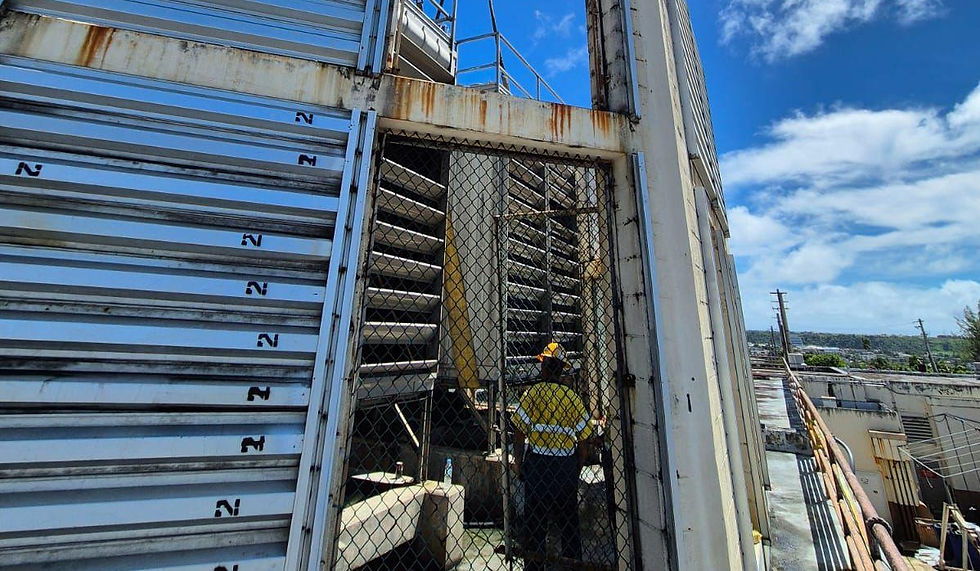Guam Vets Give VA Officials an Earful at Town Hall Meet
- By Bruce Lloyd
- Apr 5, 2017
- 4 min read

Guam military veterans who served in American conflicts dating back to World War II packed a main ballroom and an overflow room at the Guam Hilton Resort & Spa in Tumon, to present largely familiar complaints to representatives of the Honolulu Veterans Affairs Regional Office. Although the vets were respectful and offered some kudos to staffers at the Guam Community Based Outpatient Clinic, they were clearly not satisfied with the current level of services and the issue of illnesses arising from exposure to the toxic herbicide Agent Orange during the Vietnam era got more attention than in the past.
In the hot seats in front of this persistent group were Karen M. Gooden, director of the Veterans Benefits Administration’s Honolulu regional office, Tonia J. Bagby, associate director for the VA Pacific Islands Healthcare System, and Katrina Hansen-Schmitt, associate director of patient care services with Pacific Islands Healthcare.
With its large community of active duty military personnel and the tradition of military service in island families, Guam was always destined to have a large resident population of veterans. But over many years, the decision has been to base providers of the benefits and medical and other services that the Guam and other Pacific Island vets have earned thousands of miles away in Hawaii, rather than building local facilities. This has led to requirements for extensive travel by those requiring basic evaluations and more complex medical services. Director Gooden said the VA would prefer not to send vets to Honolulu for evaluations, but did not have available providers for Guam and Alaska for these services. “We recognize it puts a strain on all our veterans,” Gooden said.
A clinic/dispensary facility to meet basic non-critical needs of Guam vets was for years housed at Navy Hospital, piggybacking on facilities for active duty personnel. But even before the opening of the VA Community Based Outpatient Clinic in a separate building a few years ago, local vets complained that its size and staffing appeared inadequate to serve thousands of local veterans. Vet Joseph Mendiola called the CBOC “that itty-bitty clinic up there” and said it was suffering turmoil with a lot of medical staff turnover. But Mendiola got loud clapping and applause from the crowd with this observation: “The one thing that really irks me is that there’s no one to return my phone call. It’s common decency. When someone calls, return their call.” Mendiola suggested volunteers might be enlisted to handle the phone traffic.
Director Gooden said construction of an extension to the CBOC is set to begin next year after years of planning. The clinic continues to instruct those requiring urgent medical care to seek it at the Navy Hospital’s emergency room. Ironically, the picture on the CBOC’s website is actually of the old Navy Hospital’s ER, now moved to its new building.
Director Gooden said that faster claims processing has been proceeding and that the 293 claims currently backlogged for Guam represent a significant decrease. She said the VA is working around the Trump administration’s federal hiring freeze which has been applied selectively to the agency. Associate Director Bagby said clinical care providers—doctors and nurses—are on the exempted list for the Trump administration hiring freeze.
Vet Henry Leon Guerrero was among those with a travel complaint. After enduring a painful procedure in Hawaii, the VA booked him on the 17 hour ‘island hopper’ flight back to Guam, a tourist draw featuring frequent landings and take-offs, but not suited to a recently treated patient. Others complained that they or their spouses were booted out of Honolulu hotels while still being treated.
The vets say that with that distance comes insensitivity to local needs, which Retired Command Sergeant Major Franklin Artero attributed to the view of Guam as “the red-headed stepchild of the U.S.A.” Artero said he told the VA after months of waiting that he expected his prescription would change before his new glasses arrived from Hawaii. “You can get glasses in one hour at the mall,” said Artero, noting that two women in Honolulu handle this entire program for Pacific vets.
Vets who served in Asia during the Vietnam War era have been confirmed as suffering the rashes, tumors and other result of exposure to toxic herbicides, including the chemical best known as Agent Orange, which was used extensively to knock down jungle foliage during the war. Although military sources have denied that AO was ever used on Guam, Gov. Eddie Baza Calvo has heard enough to order the Guam Environmental Protection Agency investigation into residual traces of the chemical, which was reportedly used to clear fence lines and perimeters around island bases. GEPA has reportedly obtained eight signed affidavits from veterans on the use of Agent Orange here, which may lead to testing of these vets.
Vietnam vet Juan Finona has been making claims of Agent Orange damage during his service since 1988. His most recent claim was in 2013. “How many more tumors do they have to remove from my body to qualify for Agent Orange [compensation],?” Finona asked the VA reps.
Drafted from Guam in 1964, William Duenas Sablan recalled watching B-52 bombing runs. “When we would go out to the area the next day, the foliage was all cleared.” Sablan said that the years old promise that the herbicide was safe reminded him of treaty promises given to Native Americans.
“All the doctors that I see, they say, Mr. Sablan, you’ve got rashes on your body, it’s probably just something local. You guys, that are Vietnam vets, you got Agent Orange also. So the thing is, I’m not looking for millions of dollars, I’m not looking for medals, but I just want to be compensated for that time period.”





